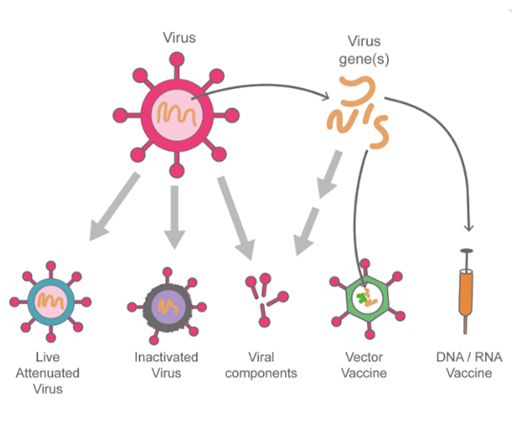1.2 Vaccine types
There are several different ways to produce a vaccine against a virus (Figure 1). Traditional vaccines, used the virus itself but chemically inactivated in such a way that it could not produce an infection. Another route was to develop a variant of the virus that could replicate, but which did not produce any symptoms or pathology in the recipient. The two main types of polio vaccine were derived by these two strategies – inactivation or attenuation.
More recently, vaccines have been developed against individual components of a virus, for example against purified spike-protein of SARS-CoV2. One limitation here is knowing which component(s) of the virus are important for inducing immunity. Also, recall that the antigens which stimulate B cells and T cells are often different. Moreover an immune response to a single virus component is often less strong than the response to an inactivated or attenuated whole virus. For this reason, such antigens may be modified to make them more immunogenic, or to favour one type of immune response.
The latest vaccines are produced by genetic engineering. The idea here is to use the genetic material of the virus, to induce production of viral components which then stimulate the immune response. It turns out that this approach, using mRNA for the SARS-CoV2 spike protein, was very successful in the race to develop effective COVID-19 vaccines.

